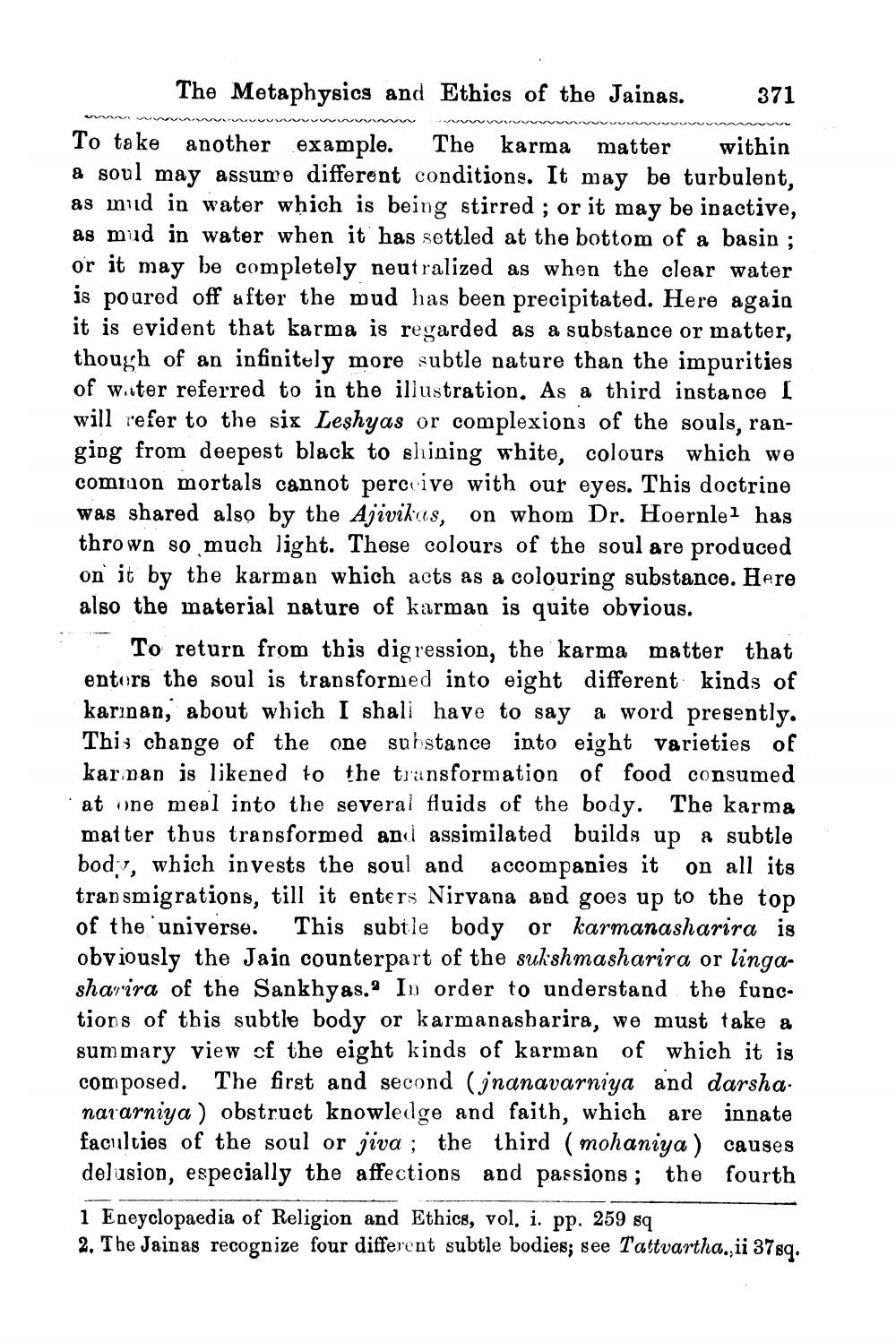________________
The Metaphysics and Ethics of the Jainas.
within
To take another example. The karma matter a soul may assume different conditions. It may be turbulent, as mud in water which is being stirred; or it may be inactive, as mud in water when it has settled at the bottom of a basin; or it may be completely neutralized as when the clear water is poured off after the mud has been precipitated. Here again it is evident that karma is regarded as a substance or matter, though of an infinitely more subtle nature than the impurities of water referred to in the illustration. As a third instance I will refer to the six Leshyas or complexions of the souls, ranging from deepest black to shining white, colours which we common mortals cannot perceive with our eyes. This doctrine was shared also by the Ajivikas, on whom Dr. Hoernle1 has thrown so much light. These colours of the soul are produced on it by the karman which acts as a colouring substance. Here also the material nature of karman is quite obvious.
371
To return from this digression, the karma matter that enters the soul is transformed into eight different kinds of karinan, about which I shall have to say a word presently. This change of the one substance into eight varieties of karman is likened to the transformation of food consumed at one meal into the several fluids of the body. The karma matter thus transformed and assimilated builds up a subtle body, which invests the soul and accompanies it on all its transmigrations, till it enters Nirvana and goes up to the top of the universe. This subtle body or karmanasharira is obviously the Jain counterpart of the sukshmasharira or lingasharira of the Sankhyas. In order to understand the functions of this subtle body or karmanasharira, we must take a summary view of the eight kinds of karman of which it is composed. The first and second (jnanavarniya and darsha navarniya) obstruct knowledge and faith, which are innate faculties of the soul or jiva; the third (mohaniya) causes delusion, especially the affections and passions; the fourth
1 Eneyclopaedia of Religion and Ethics, vol. i. pp. 259 sq 2. The Jainas recognize four different subtle bodies; see Tattvartha.,ii 37sq.




